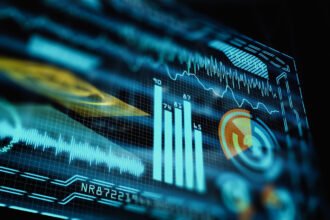 Retail has always been an industry that relies heavily on an understanding of how its customers are behaving. This includes what they are and aren’t buying, when they are shopping and what aspects of a retail operation are receiving their attention.
Retail has always been an industry that relies heavily on an understanding of how its customers are behaving. This includes what they are and aren’t buying, when they are shopping and what aspects of a retail operation are receiving their attention.
 Retail has always been an industry that relies heavily on an understanding of how its customers are behaving. This includes what they are and aren’t buying, when they are shopping and what aspects of a retail operation are receiving their attention. All of the different sectors of retail deal with the need for this information, whether they are selling consumer electronics or housewares.
Retail has always been an industry that relies heavily on an understanding of how its customers are behaving. This includes what they are and aren’t buying, when they are shopping and what aspects of a retail operation are receiving their attention. All of the different sectors of retail deal with the need for this information, whether they are selling consumer electronics or housewares.
It has now been well-established that business intelligence – along with the software programs best equipped to analyze it and allow it to be actionably used – is extremely beneficial to most industries. SmartDataCollective reports that using business intelligence on the right scale and collecting the information that is most applicable will pay major dividends as time goes by.
BI is finding itself successfully applied throughout the retail field, most recently in the apparel sector, according to the latest data. Companies in this field that are considering adopting BI and analytics tools would do well to look at examples of its successful deployment.
Maidenform excels with optimal BI use
Despite being one of the world’s best-known vendors of women’s intimate apparel and lingerie, Maidenform recently found that it was encountering problems with accurately predicting consumer demand for certain particular products. If it could not glean this information from its supply chain, it might not ship the right amount of a given item when that product is in high demand – leading to consumer dissatisfaction.
Bob Russo, the company’s CIO, explained this in an interview with Apparel. “Measurements are extremely important in order to continuously improve,” he stated. “How do you know where you are and how far you have to go if you don’t measure?”
To help address this problem, Maidenform decided to adopt BI and analytics software tools. These advances allowed it to properly analyze the key performance indicators that mattered, and do so in a fast and efficient manner. For example, it became able to access and examine more than a billion records of point of sale data in less than five seconds. Additionally, having a BI solution in place allowed it to better adopt omnichannel retail strategies, which have become more and more important within the sector.
Macy’s uses analytics for marketing
Apparel reported that department retailer Macy’s also recently adopted a BI platform. This tool serves as the backbone of its digital marketing department, collecting information to gauge customers’ likelihood of making a purchase along with the types of products that appeal to them. Implementing this tool allowed the retailer to see a 20 percent year over year decline in its email unsubscribe rate.
The platform is also optimized to deal with the growing popularity of using smartphones and tablets while shopping, delivering enhanced features to customers via mobile apps that harness vast stores of product data.







